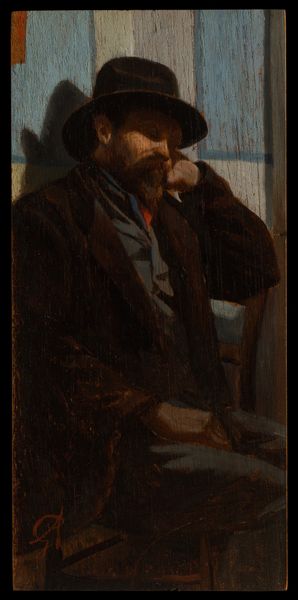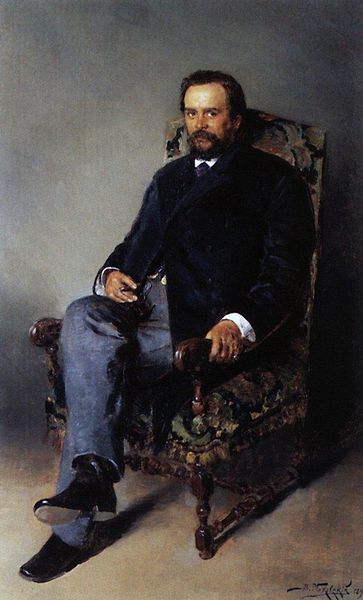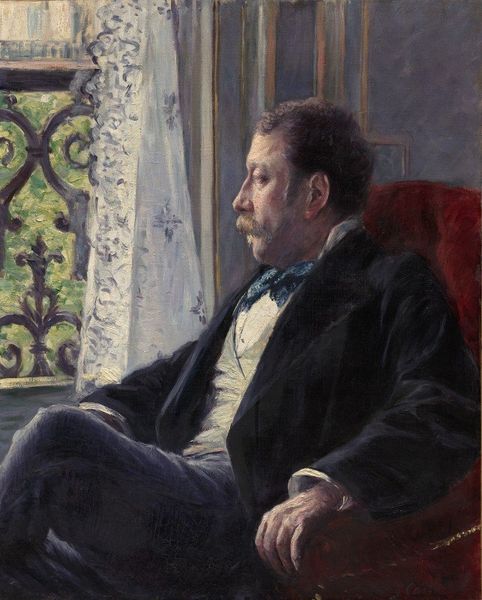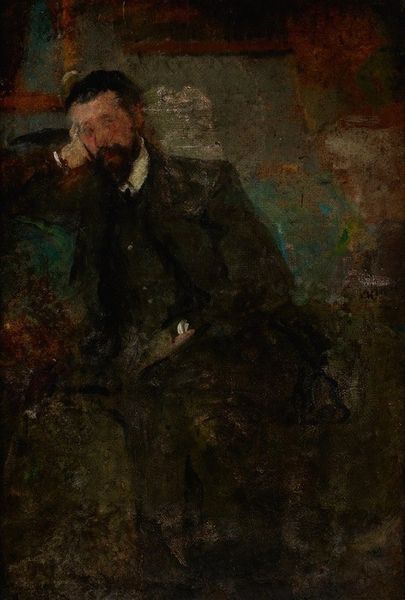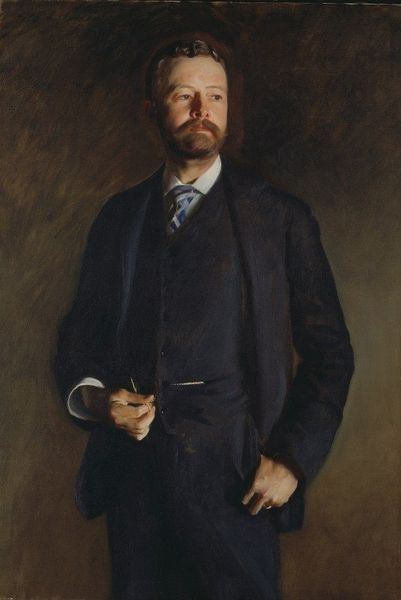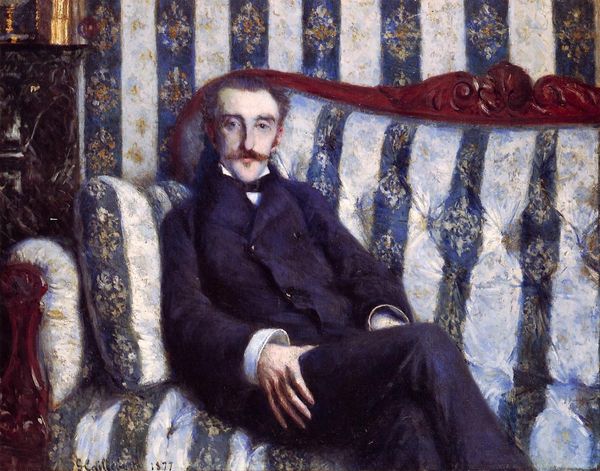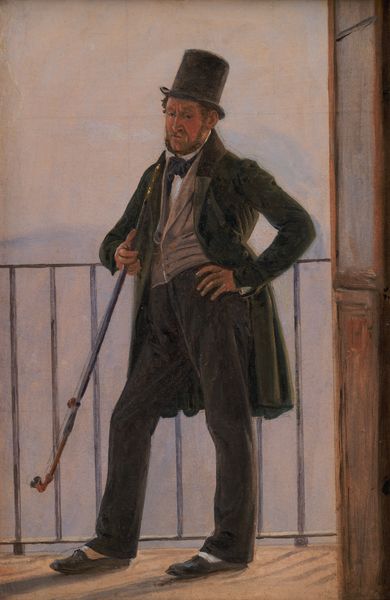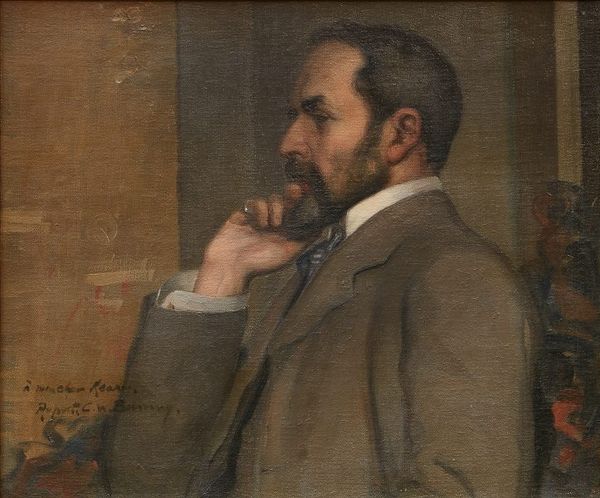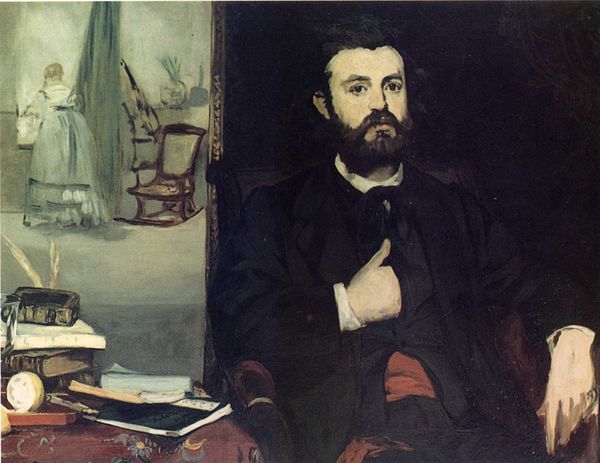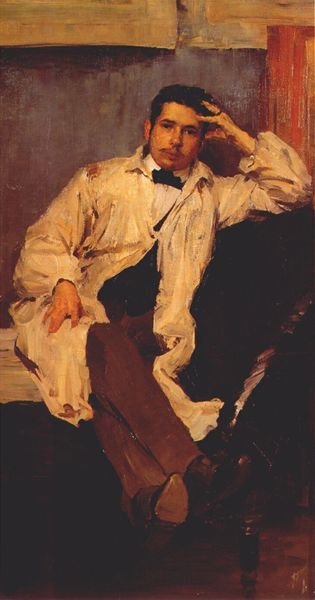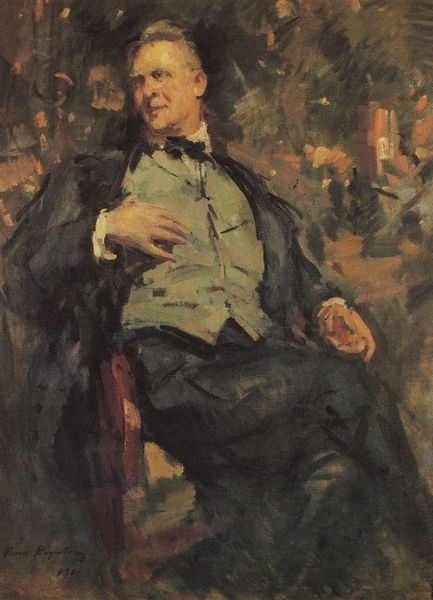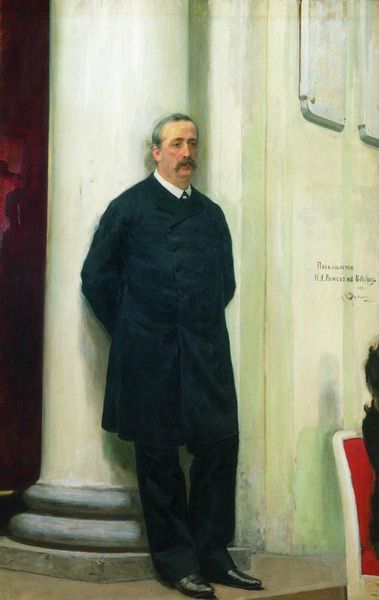
Dimensions: 92 x 73 cm
Copyright: Public domain
Gustave Courbet painted this self-portrait while imprisoned in Sainte-Pélagie prison in France. Courbet presents himself as a figure of quiet dignity amidst the aftermath of the Paris Commune. Painted after Courbet's involvement in the Commune, this work speaks to the fraught relationship between art and politics. The window, a common motif in art history, here serves as a literal barrier, separating the artist from the world. Courbet's incarceration stemmed from his role in the destruction of the Vendôme Column, a symbol of imperial authority. Was he a vandal or revolutionary? The painting invites us to consider the artist's role in challenging established power structures. The composition creates meaning through muted tones and a contemplative mood, offering a glimpse into the artist's state of mind. To understand this moment fully, we must investigate the social conditions and political turmoil that shaped Courbet's life and work. Art is a product of its time, and its meaning is always contingent on the context in which it was created and received.
Comments
No comments
Be the first to comment and join the conversation on the ultimate creative platform.
